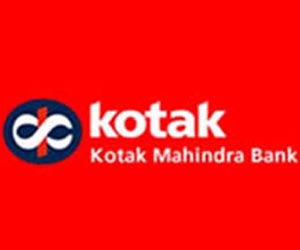The oil ministers of the Organization of Petroleum Exporting (OPEC) countries met in Vienna yesterday. They decided to keep the total production of oil coming from OPEC at 30 million barrels per day. This is one million barrels per day more than OPEC’s estimate of the demand for its oil in 2015.
“It was a great decision,” said Saudi Oil Minister Ali al-Naimi, after talks which lasted for around five hours. With this decision not to cut production the price of oil fell further, and as I write this the price of Brent crude oil stands at $72.2 per barrel of oil.
The decision not to cut production went against the demand of OPEC members like Iran and Venezuela, who had demanded that production be cut. A falling oil price is hurting these countries badly given that money earned from selling oil is a major source of revenue for the respective governments.
Also, in the past, OPEC has been quick to cut production whenever prices have fallen and that has ensured that prices don’t fall any further. But that doesn’t seem to be happening this time around. Saudi Arabia, the largest producer of oil within OPEC, wants to drive down the price of oil.
The question that crops up here is why did OPEC go with what Saudi Arabia wanted it to? It has 11 other countries as members as well. While OPEC has been regularly referred to as a cartel, it is important to understand that the structure of OPEC is different from that of a cartel. It is probably better to define the structure of OPEC as what economists call a “leading firm” model of oligopoly, a market which is dominated by a small number of sellers and in which the largest producer sets the price and the others follow.
Saudi Arabia is the largest producer within OPEC. Within OPEC, it also has the almost unquestioned support of what are known as the sheikhdom states of Bahrain, Kuwait, the United Arab Emirates, and Qatar.
These countries have faced threats from other OPEC members, like Iraq and Iran, in the past. For many years, Iraq had been eyeing Kuwait. It had tried to annex Kuwait in 1961 (and it tried again in the early 1990s). The support of Saudi Arabia, the largest nation in the region, is very important for these countries. Hence, these countries tend to go with Saudi Arabia, not leaving much space for the other member countries to disagree.
Moral of the story: OPEC does what Saudi Arabia wants it to do. And these days Saudi Arabia seems to want lower oil prices. Why is that the case? Look at the table that follows. The table shows the daily oil production in the United States, which had fallen to around 4 million barrels per day in 2008. It has since jumped up again to around 9 million barrels per day, the kind of level not since the mid 1980s.
This has happened primarily because of a boom in shale oil production in the United States. As Javed Mian writes in Stray Reflections newsletter for the month of November “The US pumped 8.97 million barrels a day by the end of October (the highest since 1985) thanks partly to increases in shale-oil output which accounts for 5 million barrels per day.”
The more shale oil United States produces the lesser it has to depend on OPEC and other parts of the world, to fulfil its massive oil requirements. The trouble is that shale oil is expensive to produce and is viable only if oil continues to sell at a certain price. Given this, Saudi Arabia wants to ensure that price of oil is driven down further, so that it can drive the shale oil producers out of business.
There are various estimates about the oil price at which it is viable to produce shale oil. A report brought out by Deutsche Bank said that around 40% of shale oil production in the United States next year, would be unviable if the price of oil fell below $80 per barrel. Very recently, this was a sentiment echoed by the chief economist of the International Energy Agency as well.
Nonetheless, Maria van der Hoeven, executive director of the International Energy Agency, contradicted her chief economist by telling Reuters recently that 82 percent of the American shale oil firms had a break-even price of $60 or lower.
There are still other estimates. As Mian writes in his newsletter “The median North American shale development needs an oil price of $57 to breakeven today, compared to $70 last year according to research firm IHS.”
Analysts at Citibank recently said that the price of oil would have to fall below $50 a barrel for completely halting shale oil production in the United States. Also, many shale oil companies would continue to remain viable for an oil price of anywhere between $40 to $60 a barrel. It would be safe to say that there are as many break-even prices for shale oil as there are analysts. And it is very difficult to figure out which of these estimates is correct.
This is not the first time Saudi Arabia is following the strategy of bleeding out its competitors. It did the same nearly three decades back. “This has happened once before. By the mid-1980’s, as oil output from Alaska’s North Slope and the North Sea came on line (combined production of around 5-6 million barrels a day), OPEC set off a price war to compete for market share. As a result, the price of oil sank from around $40 to just under $10 a barrel by 1986,” writes Mian.
Hence, Saudis are putting to work a strategy that they have used in the past. Nevertheless, it doesn’t seem to have had the necessary impact on the production of oil by shale oil firms in the United States. On November 10, earlier this month, the US Energy Information Administration said that the seven largest shale oil players would be producing 125,000 barrels per day more in December than they had in November.
One reason for this is that the money that has already gone into producing shale oil is essentially a sunk cost. Hence, production is not going to be stopped immediately. As Ben Hunt who writes the Epsilon Theory newsletter puts it “There’s just too much non-cartelized money, technology, and political capital invested in US shale production to slow it down.”
Also, companies already have long term production contracts in place. These contracts require that they deliver a minimum level of production, even if it means selling at a loss. “Failure to comply could mean the loss of the lease and any future upside when prices [are] normalized,” writes Chip Register on Forbes.com.
Legendary oil man, T Boone Pickens feels that Saudi Arabia has entered into a stand-off to “see how the shale boys are going to stand up to a cheaper price.”
To conclude, Saudi Arabia driving down the price of oil hasn’t yet had an impact on shale oil production. Given this, it is likely that Saudi Arabia led OPEC will continue to drive down the oil price in the months to come. “In the current cycle, though, prices will have to decline much further from current levels to curb new investment and discourage US production of shale oil,” writes Mian.
It is also possible that the United States government may decide to intervene and introduce “tariffs on cheap foreign oil imports,” to keep the local shale oil industry viable.
The United States government will also have to take into account the fact that Saudi Arabia buys and sells oil in dollars. This ensures that in order to earn these dollars countries carry out international trade in dollars and accumulate a major part of their foreign exchange in dollars. This ensures that dollar continues to have an “exorbitant privilege” allowing United States to repay its debt to foreigners by simply printing them.
Further, it also helps keep the interest rates in the United States low, as countries line up to invest their foreign exchange reserves in treasury bonds issued by the United States government. Given this, its a Catch 22 situation for the United States. Does it encourage its local shale oil industry and reduce its dependence on importing oil from the Middle East? Or does it work against the “exorbitant privilege” of the dollar? Its not an easy choice to make.
Hence, its safe to predict that oil prices will continue to be low in the short-term. There are too many interplaying factors at work making it impossible to predict how things will turn out to be in the long run.
All I can say is, stay tuned.
The column originally appeared on www.FirstBiz.com on Nov 28, 2014
(Vivek Kaul is the author of the Easy Money trilogy. He tweets @kaul_vivek)




